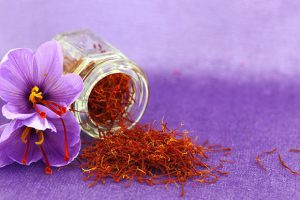World Soil Day also highlights the growing problem due to population expansion. Therefore, it is necessary to take a step to reduce the erosion of soil, to maintain fertility so that food safety can be ensured.
Soil is made up of minerals, organic matter, and air in different proportions. It is important for life as it provides the medium for the growth of a plant, a habitat for several insects and other organisms. It also acts as a filtration system for surface water and in the maintenance of atmospheric gases. It is the source of four essential ‘living’ factors including food, clothes, shelter, and medicine. Therefore, the conservation of soil is necessary. So, to raise awareness about soil loss, World Soil Day is celebrated on 5 December.
World Soil Day 2019: Theme
The theme of World Soil Day 2019 is “Stop Soil Erosion, Save Our Future”. The theme focuses on the increasing challenges in soil management and raises the profile of healthy soil by encouraging organizations, governments, communities, and individuals around the world to work towards improving soil health and its conservation.
World Soil Day: History
In 2002, the International Union of Soil Sciences recommended to celebrate World Soil Day annually on 5 December. Also, FAO supported the formal establishment of World Soil Day as a global awareness-raising platform under the leadership of the Kingdom of Thailand and within the framework of the Global Soil Partnership. The conference of FAO unanimously endorsed World Soil Day in June 2013 and requested its official adoption at the 68th UN General Assembly. In December 2013, the UN General Assembly at the 68th session declared 5 December as World Soil Day. The first World Soil Day was celebrated on 5 December 2014.
Do you know why is 5 December chosen as World Soil Day?
This date corresponds to the birthday of the late H.M. King Bhumibol Adulyadej, King of Thailand. He was one of the main proponents of this initiative.
What is Soil Conservation and its methods?
Soil conversation is the method to preserve soil. There are several reasons for the loss in soil fertility including over-use, erosion, salinisation, and chemical contamination.
Soil erosion is when topsoil is removed which is important for nutrients, and micro-organisms that are necessary for plant growth and its shine. Let us tell you that soil conservation is one such step that protects the soil from being washed away. There are various ways to conserve the soil.
Techniques and methods to conserve soil are as follows:
- 1. Contour Ploughing: Instead of planting the crop, contour plowing is done to get the desired farmland. It is done for farmland on slopes to prevent run off improve crop yields. To minimize soil erosion, plowing is done along the contours of the land.
- Terrace farming: It is a method of carving multiple, flat leveled areas into hills. It is done to prevent runoff and hold the soil nutrients in the beds.
- Windbreaks: To prevent wind erosion, in this method trees are grown in dense patterns around the farmland.
- Crop Rotation: To make soil valuable in nutrients crop rotation technique is followed. Like turnips and radishes are rotated with cash crops to maintain the nutrient value of the soil.
- Agrostological Measures: In heavily eroded areas, grasses are planted and this technique is known as Agrostological Measures. It increases the nutrient level in the soils and when the grass is harvested it can be used as fodder for cattle.
- No-till farming: Without changing the topography of the soil crops are grown all year round by tilling or contouring. This method increases the amount of water that penetrates the soil and can increase the organic matter of the soil which leads to larger yields.
- Green Manures: Green manures are grown to fertilize the farmland on which they grow. This technique can improve the structure of the soil and suppress the growth of weeds.
- Salinity Management: When water evaporates from the soil, salt is left and can lead to damage to the soil and nutrient loss. Humic acids are used to prevent this. And saltbush is also grown to rejuvenate the soils and replace the loss of nutrients.
- Earthworms: Earthworms have great benefits for farmland as they burrow under the ground and provide more area for water to rest. The excreta of the earthworms in the soil provides nutrients to the crops. They also help to prevent soil erosion and will lead to larger crop yields.
Therefore, World Soil Day is celebrated on 5 December annually to raise awareness about the importance of soil in our lives.
Source: Jagranjosh
Link:https://www.jagranjosh.com/general-knowledge/world-soil-day-1575371339-1




